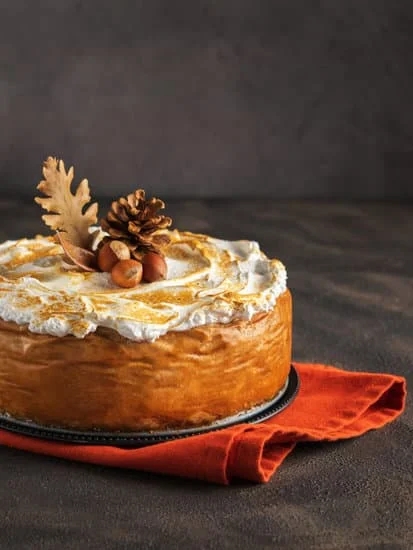When it comes to cake decorating, one of the most crucial elements is having the right consistency of icing. In this article, we will delve into the art of creating stiff icing for cake decorating, providing you with tips and tricks to achieve the perfect consistency every time. Whether you are a novice baker or a seasoned pro, mastering the skill of making stiff icing can take your creations to the next level.
To start off, it is essential to understand why stiff icing is vital for cake decorating. Stiff icing holds its shape well, making it ideal for intricate designs and decorations on cakes. Whether you are piping elaborate swirls or creating delicate flowers, having stiff icing will ensure that your designs stay in place and maintain their form. With the right techniques, you can unleash your creativity and elevate your cake decorating skills.
In this comprehensive guide, we will explore the different types of icing used in cake decorating, discuss the key ingredients needed to make stiff icing, provide a step-by-step guide on how to achieve the perfect consistency, share tips on coloring and flavoring options, and offer creative ideas for using stiff icing in your decorations.
By following our expert advice and troubleshooting common issues along the way, you will be well on your way to becoming a master at making stiff icing for cake decorating.
Understanding the Different Types of Icing for Cake Decorating
When it comes to cake decorating, one of the key elements to master is knowing how to make stiff icing. Stiff icing is essential for creating intricate designs, shapes, and textures on cakes that can withstand various decorations. It provides stability and structure to your creations, making it easier to work with and ensuring your designs hold their shape.
There are several different types of icing used in cake decorating, each serving a specific purpose. Stiff icing is typically used for creating borders, flowers, piping details, and other intricate designs that require a more firm consistency. Other types of icing, such as buttercream or cream cheese frosting, have a softer texture and are better suited for covering cakes or adding a smooth finish.
To make stiff icing for cake decorating, you will need a few key ingredients: powdered sugar (also known as confectioners’ sugar), meringue powder or egg whites, flavoring extracts (such as vanilla or almond), and water. The combination of these ingredients will create a thick and stable icing that can hold its shape when piped onto cakes or cookies. Experimenting with the ratio of each ingredient will help you achieve the desired consistency for your specific decorating needs.
Ingredients Needed to Make Stiff Icing
Granulated Sugar
To make stiff icing for cake decorating, one of the essential ingredients you will need is granulated sugar. Granulated sugar helps to add sweetness and structure to the icing, creating a smooth and stable consistency that is perfect for piping and decorating cakes. Make sure to use fine granulated sugar to avoid any graininess in your icing.
Egg Whites
Egg whites are another key ingredient in making stiff icing. They help to add stability and structure to the icing, creating a strong base for intricate designs and decorations on cakes. It is crucial to use fresh egg whites when making stiff icing to ensure the best results. The protein in the egg whites acts as a binder, holding the icing together and allowing it to hold its shape.
Cream of Tartar
Cream of tartar is often used in stiff icing recipes as it helps stabilize the egg whites and create a fluffy texture. This ingredient is particularly helpful when making royal icing, which requires a firm consistency for intricate decorations. Just a small amount of cream of tartar can make a significant difference in achieving the perfect stiffness for your cake decorating needs.
Step-by-Step Guide on How to Make Stiff Icing for Cake Decorating
Creating stiff icing for cake decorating is essential to achieve intricate designs and textures on your baked treats. Whether you are a beginner or an experienced baker, mastering the art of making stiff icing can elevate your cakes to the next level. Here is a step-by-step guide on how to make stiff icing for cake decorating:
- Start by gathering all the necessary ingredients: confectioners’ sugar, meringue powder, water, and flavoring extract (if desired).
- In a large mixing bowl, combine 4 cups of sifted confectioners’ sugar and 3 tablespoons of meringue powder. Mix these dry ingredients together until well incorporated.
- Gradually add 6 tablespoons of water to the dry mixture, mixing on low speed until the icing starts to come together. You may need to adjust the amount of water depending on the humidity in your kitchen.
- Once all the water has been added, increase the speed of your mixer and beat the icing for about 5-7 minutes until stiff peaks form. The icing should be smooth, glossy, and able to hold its shape when piped.
By following these steps, you can create stiff icing that is perfect for intricate piping work, creating beautiful flowers, borders, and other decorations on your cakes. Practice makes perfect, so don’t be afraid to experiment with different consistencies until you find what works best for your decorating needs.
Remember to keep in mind that humidity levels can affect the consistency of your icing, so be prepared to adjust the recipe accordingly. With a little practice and patience, you’ll soon be able to decorate stunning cakes with perfectly stiff icing at home.
Tips and Tricks for Achieving the Perfect Consistency
Achieving the perfect consistency for stiff icing is crucial when it comes to cake decorating. The right consistency ensures that your decorations hold their shape and detail without wilting or melting. One important tip is to slowly add liquid to your icing mixture until you reach the desired stiffness. This way, you can avoid making your icing too runny and maintain control over the texture.
Another helpful trick for achieving the perfect stiff icing consistency is to use powdered sugar sparingly. Gradually incorporate small amounts of powdered sugar into your mixture while mixing thoroughly to prevent clumps from forming. This will help you achieve a smooth and thick icing that is ideal for intricate designs on your cakes.
Additionally, the temperature of your ingredients can impact the consistency of your stiff icing. Make sure your butter or shortening is at room temperature before mixing in powdered sugar to prevent lumps and ensure a smooth texture. Taking the time to properly prepare your ingredients and mix them together gradually will result in stiff icing that is easy to work with and holds up well during decorating.
By following these tips and tricks, you can master the art of making stiff icing for cake decorating. Experiment with different ratios of ingredients and adjust based on personal preference until you find the perfect consistency for your creative designs. With patience and practice, you’ll be able to create stunning cakes adorned with beautifully detailed decorations using your perfectly stiff icing.
Coloring and Flavoring Options for Stiff Icing
When it comes to cake decorating, the color and flavor of your icing can truly make a difference in the overall look and taste of your creation. While stiff icing is essential for intricate designs and structures, adding colors and flavors can take your cake to the next level.
For coloring options, gel food coloring is preferred over liquid food coloring when making stiff icing. Gel colors are more concentrated, which means you won’t need as much to achieve vibrant hues without altering the consistency of the icing. You can mix different gel colors to create custom shades or use pre-made colored gel for convenience.
When it comes to flavoring options, extracts such as vanilla, almond, or lemon are popular choices for stiff icing. These extracts add a subtle flavor that complements the sweetness of the icing without overpowering it. You can also experiment with other extracts or flavored oils to create unique combinations that suit your taste preference.
To store leftover colored or flavored stiff icing, transfer it to an airtight container and refrigerate. Make sure to bring it back to room temperature before using it again by letting it sit out for a while or gently re-whipping it until smooth. With the right coloring and flavoring techniques, you can elevate your cake decorating skills and impress everyone with your delicious creations.
| Coloring Options | Flavoring Options |
|---|---|
| Gel food coloring | Vanilla extract |
| Mix different gel colors | Almond extract |
| Pre-made colored gel | Lemon extract |
How to Properly Store and Use Stiff Icing
Storing and using stiff icing properly is crucial to maintain its consistency and quality for cake decorating projects. Whether you have leftover icing from a batch or want to prepare in advance, knowing the right techniques can make a significant difference in the outcome of your designs. In this section, we will explore the best practices for storing and using stiff icing to ensure optimal results.
When it comes to storing stiff icing, the key is to prevent it from drying out or becoming too hard. One effective method is to transfer the icing into an airtight container or piping bag, ensuring there are no air pockets that can cause the icing to crust over.
Store the container in a cool, dry place away from direct sunlight to maintain the consistency of the icing for future use. If you plan to store the icing for an extended period, you can also refrigerate it, but make sure to bring it back to room temperature before using it again.
Using stiff icing for cake decorating requires some practice and skill to achieve clean lines and intricate designs. It is essential to work quickly once the icing is prepared as it can start to harden over time. When piping with stiff icing, apply consistent pressure and control the flow by gently squeezing the piping bag.
For more detailed work, use smaller piping tips for precision. Remember that practice makes perfect when it comes to working with stiff icing, so don’t be discouraged if your first attempts are not flawless.
| Storing Stiff Icing | Using Stiff Icing |
|---|---|
| Transfer into an airtight container | Work quickly once prepared |
| Avoid air pockets | Apply consistent pressure when piping |
| Store in a cool, dry place | Use smaller piping tips for detailed work |
Creative Cake Decorating Ideas Using Stiff Icing
When it comes to cake decorating, stiff icing opens up a world of possibilities for creating intricate and eye-catching designs. Whether you’re a beginner or a seasoned baker, learning how to make stiff icing for cake decoratingstrong> can take your creations to the next level. In this section, we will explore some creative cake decorating ideas using stiff icing that will surely impress your friends and family.
Piping Techniques
One of the most common ways to use stiff icing for cake decorating is through piping. With a piping bag and different tips, you can create various designs such as swirls, dots, stars, flowers, and even intricate lace patterns. Experiment with different piping techniques and tip sizes to add texture and dimension to your cakes.
Cake Borders
Stiff icing is perfect for creating decorative borders around the edges of your cakes. You can use a simple round tip to create a classic shell border or try using a leaf tip for a more elegant look. Borders not only add a finishing touch to your cakes but also help cover any imperfections on the edges.
Sculpting and 3D Designs
For more advanced decorators, stiff icing can be used to sculpt 3D decorations such as flowers, animals, figures, or any other shapes you can imagine. Use different consistency levels of stiff icing to create dimension in your designs. Building up layers of icing can help achieve realistic textures like fur or feathers.
By incorporating these creative cake decorating ideas using stiff icing into your repertoire, you can elevate your cakes from simple desserts to edible works of art. The key is practice and patience as mastering these techniques takes time and effort. Experiment with different designs and have fun exploring the possibilities that stiff icing has to offer in your cake decorating endeavors.
Troubleshooting Common Issues When Making Stiff Icing
When making stiff icing for cake decorating, there are common issues that may arise during the process. It is important to troubleshoot these problems so that you can achieve the perfect consistency and texture for your icing. Here are some of the most common issues when making stiff icing and how to fix them:
- Issue: Icing is too runny or thin
- Issue: Icing is too stiff or dry
- Issue: Air bubbles in the icing
If your icing is too runny or thin, it may not hold its shape when piped onto the cake. This could be due to adding too much liquid or not using enough powdered sugar. To thicken your icing, gradually mix in more powdered sugar until you reach the desired consistency.
On the other hand, if your icing is too stiff or dry, it can be difficult to pipe and spread on the cake smoothly. To soften your icing, you can add a small amount of liquid (such as water or milk) and mix until you achieve a workable consistency.
Air bubbles can cause an uneven texture in your stiff icing when decorating a cake. To prevent air bubbles from forming, gently stir your icing instead of vigorously mixing it. You can also tap the bowl of icing on the countertop to release any trapped air bubbles.
By troubleshooting these common issues when making stiff icing for cake decorating, you can ensure that your cakes turn out beautifully decorated with perfectly textured and shaped designs. Remember to practice patience and make adjustments as needed until you achieve the ideal consistency for your cake decorating project.
Conclusion
In conclusion, mastering the art of making stiff icing for cake decorating is essential for achieving beautiful and professional-looking cakes. The stiff icing provides stability and structure to your decorations, allowing you to create intricate designs that will impress any audience. By understanding the different types of icing, using the right ingredients, following a step-by-step guide, and implementing tips and tricks for consistency, you can elevate your cake decorating skills to the next level.
One crucial aspect of creating stiff icing is to pay attention to the texture and consistency during the mixing process. Knowing how to adjust the thickness of the icing by adding more sugar or liquid is key to achieving the perfect stiffness for piping and decorating. Additionally, experimenting with coloring and flavoring options can add a personal touch to your creations, making them even more visually appealing and delicious.
Properly storing and using stiff icing is also important in ensuring its longevity and quality. By following proper storage guidelines and knowing when to use fresh icing versus refrigerated or frozen batches, you can maintain the integrity of your decorations. With creativity and practice, you can explore endless possibilities in cake decorating using stiff icing, turning any ordinary dessert into a work of art that will be remembered for years to come.
Frequently Asked Questions
How Do You Make Cake Icing Stiffer?
To make cake icing stiffer, you can add more powdered sugar a little at a time until you reach the desired consistency. Another option is to mix in some cornstarch or meringue powder to help thicken the icing.
What Can I Add to Icing to Make It Harden?
If you want to make your icing harden, you can add ingredients like corn syrup, glycerin, or even a small amount of butter or shortening. These additions will help the icing set and firm up once it’s applied to the cake.
How Do You Harden Icing on a Cake?
There are a few ways to harden icing on a cake. One method is to simply let the cake sit out at room temperature for a few hours so that the icing can dry and harden naturally.
Alternatively, you can place the cake in the refrigerator to speed up this process. Another option is to use a fan or blow dryer on low heat to help dry out the icing more quickly.

Welcome to our cake decorating blog! My name is Destiny Flores, and I am the proud owner of a cake decorating business named Cake Karma. Our mission is to provide delicious, beautiful cakes for all occasions. We specialize in creating custom cakes that are tailored specifically to each customer’s individual needs and tastes.





